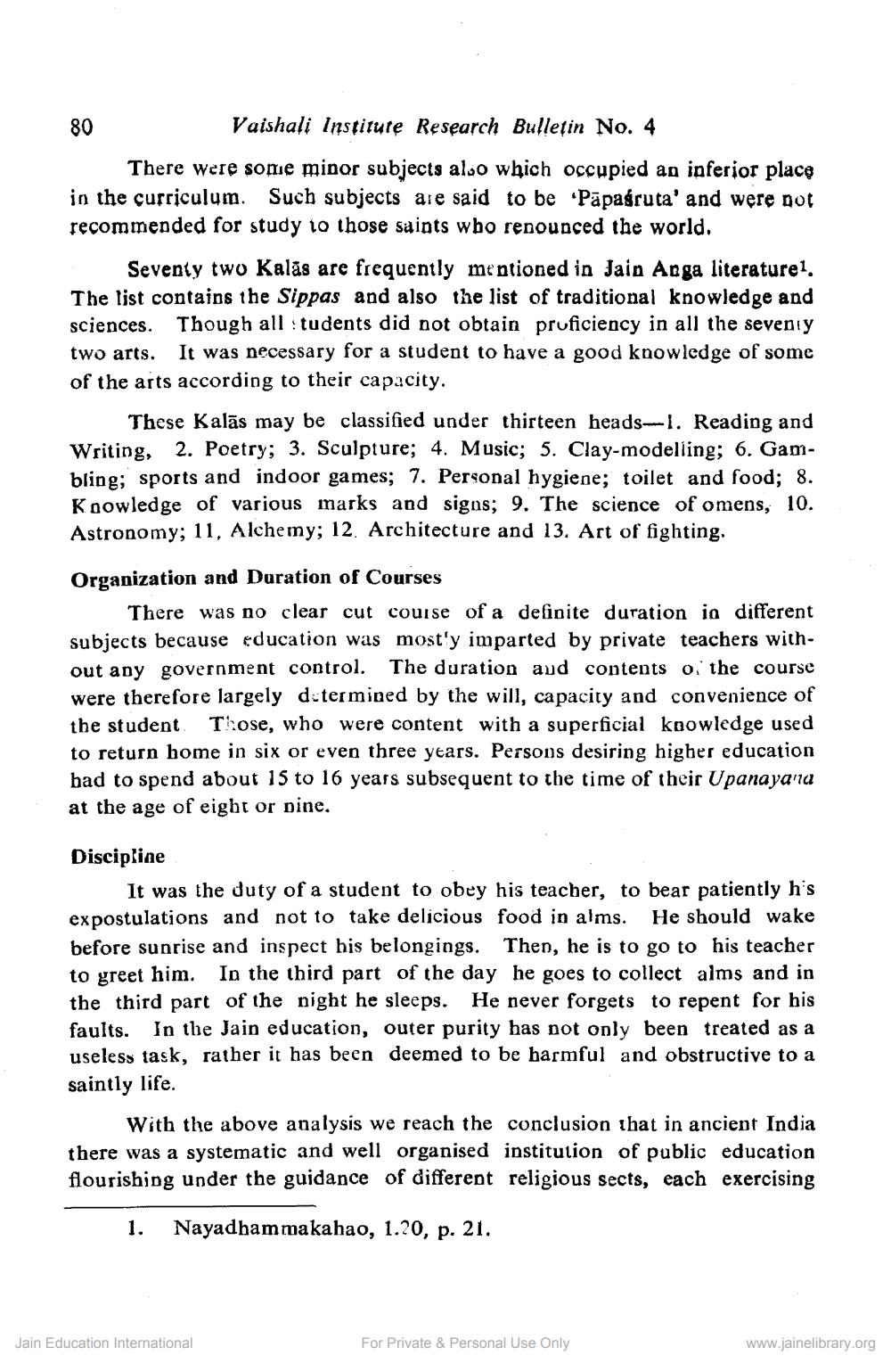________________
80
Vaishali Institute Research Bulletin No. 4 There were some minor subjects also which occupied an inferior place in the curriculum. Such subjects are said to be «Pāpasruta' and were not recommended for study 10 those saints wbo renounced the world.
Seventy two Kalās are frequently mentioned in Jain Anga literaturel. The list contains the Sippas and also the list of traditional knowledge and sciences. Though all : tudents did not obtain proficiency in all the seventy two arts. It was necessary for a student to have a good knowledge of some of the arts according to their capacity.
These Kalās may be classified under thirteen heads-1. Reading and Writing, 2. Poetry; 3. Sculpture; 4. Music; 5. Clay-modelling; 6. Gambling; sports and indoor games; 7. Personal hygiene; toilet and food; 8. Knowledge of various marks and signs; 9. The science of omens, 10. Astronomy; 11, Alchemy; 12. Architecture and 13. Art of fighting.
Organization and Duration of Courses
There was no clear cut course of a definite duration in different subjects because education was mostly imparted by private teachers without any government control. The duration aud contents o, the course were therefore largely determined by the will, capacity and convenience of the student Those, who were content with a superficial koowledge used to return home in six or even three years. Persons desiring higher education bad to spend about 15 to 16 years subsequent to the time of their Upanayaka at the age of eight or pine.
Discipline
It was the duty of a student to obey his teacher, to bear patiently h's expostulations and not to take delicious food in alms. He should wake before sunrise and inspect his belongings. Then, he is to go to his teacher to greet him. In the third part of the day he goes to collect alms and in the third part of the night he sleeps. He never forgets to repent for his faults. In the Jain education, outer purity has not only been treated as a useless task, rather it has been deemed to be harmful and obstructive to a saintly life.
With the above analysis we reach the conclusion that in ancient India there was a systematic and well organised institution of public education flourishing under the guidance of different religious sects, each exercising
1. Nayadhammakahao, 1.20, p. 21.
Jain Education International
For Private & Personal Use Only
www.jainelibrary.org




